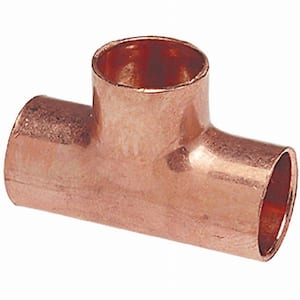The Ultimate Guide to Lasting Living with Eco-Friendly Copper Products
The Ultimate Guide to Lasting Living with Eco-Friendly Copper Products
Blog Article
Just How Copper Products Contribute to Lasting Practices in Numerous Industries
Copper products are progressively identified for their considerable contributions to sustainable techniques throughout several fields, driven by their intrinsic properties such as performance, recyclability, and sturdiness. In renewable resource systems, for instance, copper boosts the performance of solar and wind innovations, while its application in construction lessens waste through durability. In addition, the material's antimicrobial characteristics supply promising advantages in medical care setups. As industries look for to adopt more lasting practices, the duty of copper can confirm pivotal in achieving ecological objectives. What implications might this have for future developments in sustainability?
Copper in Renewable Resource
Copper plays a critical role in the advancement of renewable resource innovations, acting as an important conductor in numerous applications. Its extraordinary electric conductivity and resistance to deterioration make it an ideal product for electric wiring, which is important in solar panels, wind generators, and energy storage space systems. In solar photovoltaic or pv systems, copper is made use of in the interconnections and wiring, allowing effective energy conversion from sunshine to electrical energy.
In wind energy, copper is essential to the generators and transformers that convert kinetic energy into electric power, making certain optimum performance and dependability. The demand for electrical lorries (EVs) is raising, with copper being a vital part in batteries, electric motors, and billing facilities. The shift to EVs dramatically boosts the need for copper, as these automobiles normally make use of four times a lot more copper than traditional internal burning engine lorries.
As the world looks for to minimize climate modification and change to lasting energy resources, copper's function becomes significantly critical. The material not just enhances the efficiency and longevity of renewable resource systems yet additionally sustains the broader objective of lowering greenhouse gas exhausts and promoting a lasting future.
Eco-Friendly Construction Materials
In the last few years, there has been a noteworthy change in the direction of the fostering of eco-friendly building and construction products in reaction to growing ecological concerns. This modification is inspired by the need for lasting options that minimize environmental footprints while keeping structural stability and visual appeal.
Copper, known for its durability and recyclability, has actually become an essential gamer in this market. It can be utilized in roof, pipes, and electrical systems, adding to power performance and minimizing waste. Copper's durability means less substitutes with time, further boosting its sustainability profile.
Furthermore, materials such as bamboo, reclaimed timber, and recycled steel are acquiring appeal. These options not just provide lowered environmental influence yet likewise promote resource conservation. As developing codes significantly highlight sustainability, contractors and engineers are integrating these products right into their tasks, promoting innovation in style.
The boosting adoption of environmentally friendly building products mirrors a wider commitment to sustainability in the constructed environment. By focusing on these products, the building industry can considerably minimize its carbon impact, straighten with governing standards, and sustain a healthier community for future generations. This trend marks a pivotal action in the direction of an extra lasting future in building.
Copper's Function in Healthcare
Current researches have actually highlighted the substantial role of copper in healthcare settings, particularly due to its antimicrobial residential or commercial properties. Copper surfaces have been revealed to minimize the presence of microorganisms, including infections and germs, by up to 99.9% within a brief duration. This impressive effectiveness makes copper an important material for high-touch surfaces in healthcare facilities, such as doorknobs, bed rails, and IV poles, thus adding to boosted infection control steps.
Along with its direct antimicrobial impacts, copper additionally plays a duty in the more comprehensive context of health center sustainability (Copper Products). By integrating copper into medical devices and furnishings, healthcare facilities can minimize the incidence of healthcare-associated infections (HAIs), which not only improves person outcomes but additionally decreases the expenses linked with prolonged hospital stays and added therapies
In addition, copper's sturdiness and recyclability straighten with lasting practices, enabling liable resource monitoring. As medical care systems increasingly prioritize both patient safety and security and environmental stewardship, the assimilation of copper products is coming to be extra common. This twin advantage underscores copper's important payment to a healthier, safer, and extra lasting healthcare atmosphere.
Sustainability in Transportation

Additionally, copper's durability and corrosion resistance add to the durability of transportation framework (Copper Products). In rail systems, as an example, copper elements boost the dependability and effectiveness of signaling and power systems, necessary for decreasing hold-ups and power usage. In addition, copper's role in renewable resource systems, such as solar and wind, sustains sustainable transportation options by providing tidy energy for electric transportation choices
Investments in copper modern technology not just foster sustainability but additionally boost economic growth and work production in green sectors. As markets aim to meet rigid environmental regulations, the application of copper items in transportation becomes a crucial strategy in accomplishing sustainability goals and advertising a cleaner, more reliable future.
Copper and Circular Economy
As the globe increasingly embraces sustainability, the function of copper in the round economy becomes ever much more substantial. Copper's intrinsic residential properties-- such as its recyclability, conductivity, and sturdiness-- position it as a key material in a resource-efficient economic climate. The circular economy intends to minimize waste and take full advantage of source use via recycling and reusing materials, and copper master this regard.
The steel can be recycled indefinitely without loss of quality, making it a suitable candidate for sustainable practices across various sectors, consisting of building, electronics, and sustainable power. By recycling and recouping copper from end-of-life products, industries can dramatically reduce the see here now demand for virgin materials, thus decreasing ecological effects related to mining and handling.
Moreover, the integration of copper into round economic climate structures not only conserves resources yet likewise fosters development. Businesses that prioritize copper reusing add to a more lasting supply chain, enhancing their competitiveness while aligning with regulatory needs and customer choices for environmentally accountable items.
Final Thought
To conclude, copper products substantially contribute to lasting practices across numerous fields. Their essential function in like this enhancing renewable resource modern technologies, advertising eco-friendly building products, sustaining infection control in health care, helping with lasting transportation, and personifying the principles of a circular economic situation highlights the convenience and significance of copper. By integrating copper right into numerous applications, sectors can achieve greater performance, lower environmental influence, and straighten with global sustainability objectives, inevitably fostering a more lasting future.

Copper's exceptional conductivity makes it a preferred product in electrical lorry (EV) systems, improving power performance and performance. Additionally, copper's duty in renewable power systems, such as solar and wind, supports lasting transport services by providing tidy power for electric transportation options.
Their important role in boosting sustainable power technologies, advertising green building materials, sustaining infection control in medical care, facilitating sustainable transportation, and embodying the concepts of a circular economic situation highlights the adaptability and relevance of copper.
Report this page